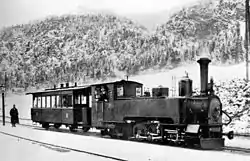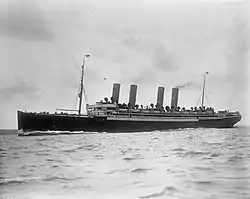First globalization
"First globalization" is a phrase used by economists to describe the world's first major period of globalization of trade and finance, which took place between 1870 and 1914. The "second globalization" began in 1944 and ended in 1971. This led to the third era of globalization, which began in 1989 and continues today.[1]



History
Globalization revolves around technological and social advances, which further leads to advances in trade and cultural relativism throughout the world. Some economists claim that globalization was first started by the discovery of the Americas by Christopher Columbus. This assumption is considered false due to the mass discovery of gold and silver in mines. This discovery led to the decrease in value of silver and gold in Europe, causing inflation in the Spanish and Portuguese empires.[2] However, the discovery of the Americas and the natives gave European traders a new source of labor between the continents, which also increased trade. This stage has not been officially deemed the "first era of globalization" because the world trade numbers were not increasing exponentially. World trade increased by 1% per year from 1500 to 1800, which further led to the first era of globalization.[3]
Entering the 18th century, due to new technological breakthroughs world trade started to increase rapidly. The first technological advancement that contributed to this was the steam engine, introduced in the 17th century. This led to major progress in international trade among the economic powers of the world.[4]
The invention of the steamship had a great impact on the first wave of globalization. Before its invention, trade routes were reliant on wind patterns, but steamships reduced shipping time and shipping cost. By 1850, nearly 129 countries used steamships for trade, and approximately 5,000 imports and exports were made to 5,000 cities, thus making a great impact on the world's global economy.[5]
Sources
- Piketty, Thomas (2014). Capital in the Twenty First Century. Translated by Goldhammer, Arthur. Cambridge, Mass.: Belknap Press: An Imprint of Harvard University Press. ISBN 9780674430006.
- "When did globalisation start?". The Economist. Retrieved 2018-03-26.
- "The Three Waves of Globalisation - Nordregio". www.nordregio.se. Retrieved 2018-03-26.
- Rennen, Ward (2003). "The Globalisation Timeline". The Globalisation Timeline. 4: No. 3, pp. 137–144.
- "On #Trade, #Globalization, #Development and Steamships". The NEP-HIS Blog. 2014-10-08. Retrieved 2018-04-09.